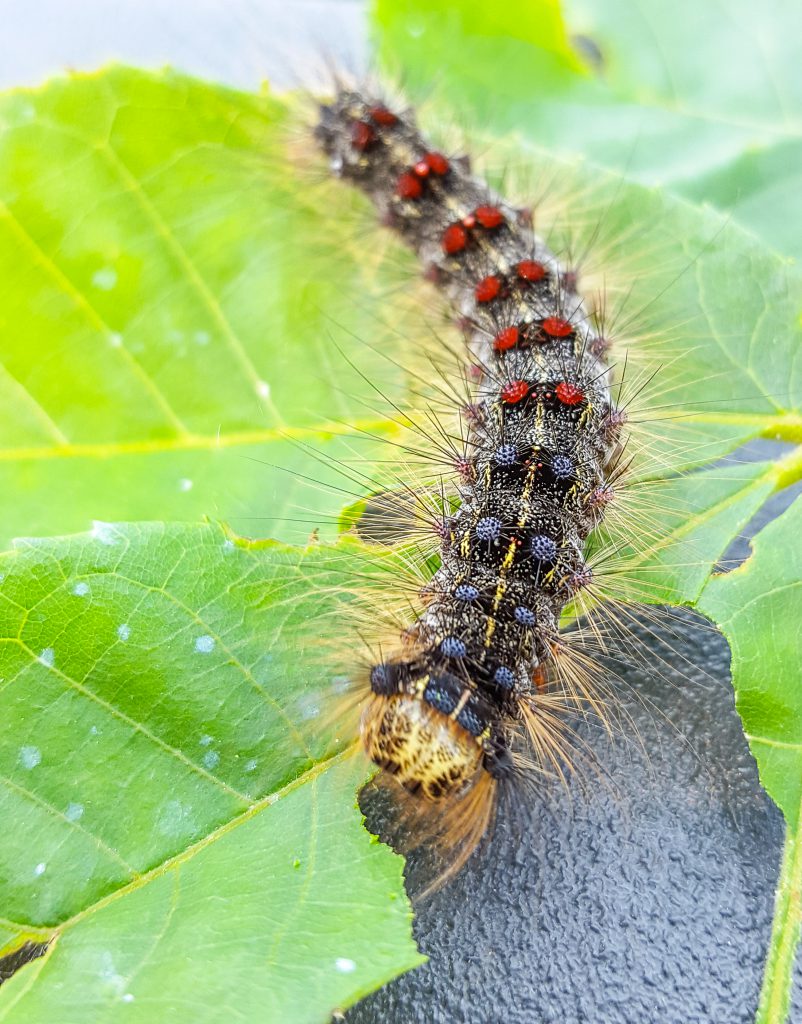Scientific name: Lymantria dispar
The Entomological Society of America has changed the accepted common name of Lymantria dispar. “Spongy moth” has been formally adopted as the new common name. To learn more visit the Entomological Society of America Web site.
What Is It?
Spongy moths include Lymantria dispar asiatica, Lymantria dispar dispar, and other invasive moths including rosy moths (Lymantria mathura) and nun moths (Lymantria monacha). The spongy moth is one of the worst American forest pest insects. It devours the leaves of more than five hundred different species of trees and shrubs and causes enormous damage to the environment and the economy.
Is It Here Yet?
Most spongy moths are brought to new areas by people, and Washington sees new introductions every year. Eradication efforts by the Washington State Department of Agriculture have prevented spongy moths from becoming established here. The department conducts annual surveys to find new introductions and every summer places twenty thousand traps throughout the state. It also works across regional borders to ensure that the Pacific Northwest does not end up permanently infested, as has happened on the East Coast.
Why Should I Care?
Due to its voracious appetite and ability to reproduce, the spongy moth causes incredible damage to forests, nurseries, vegetation along creeks and rivers, and trees and shrubs in yards and parks. It also alters wildlife habitat and affects the quality of life in communities that experience repeated outbreaks. The U.S. Department of Agriculture estimates that the economic cost of spongy moths has averaged $30 million a year for the past twenty years, mostly due to quarantines imposed on timber and agricultural products.
How Do We Stop It?
Spongy moths primarily are introduced by people. So, please take precautions when traveling to infested areas to avoid bringing eggs back on cars, recreation vehicles, and outdoor supplies. Please do not remove or vandalize traps. Follow quarantine rules and do not transport any firewood or other outdoor material from infested areas.
What Are Its Characteristics?
- Spongy moth adult males are light brown. Lymantria dispar dispar moth females are white, do not fly and have dark zigzags on their wings.
- The spongy moth has a wing span of about 1 1/2 inches.
- Eggs masses of a hundred or more are laid on branches or other sheltered places. The masses are buff colored when freshly laid and will pale as they age.
- Mature larvae are covered in light-colored tufted hairs with five pairs of blue bumps followed by six pairs of red bumps down the back.
- The pupae (or resting stage between the caterpillar larva and adult moth) is a dark brick red and usually found under tree bark and crevices or other protected areas.
How Do I Distinguish It From Native Species?
See photographs of other species here:
- Invasive.org (nun moth)
- Invasive.org (rosy moth)
Additional Photographs






These photos are courtesy of the Washington State Department of Agriculture.